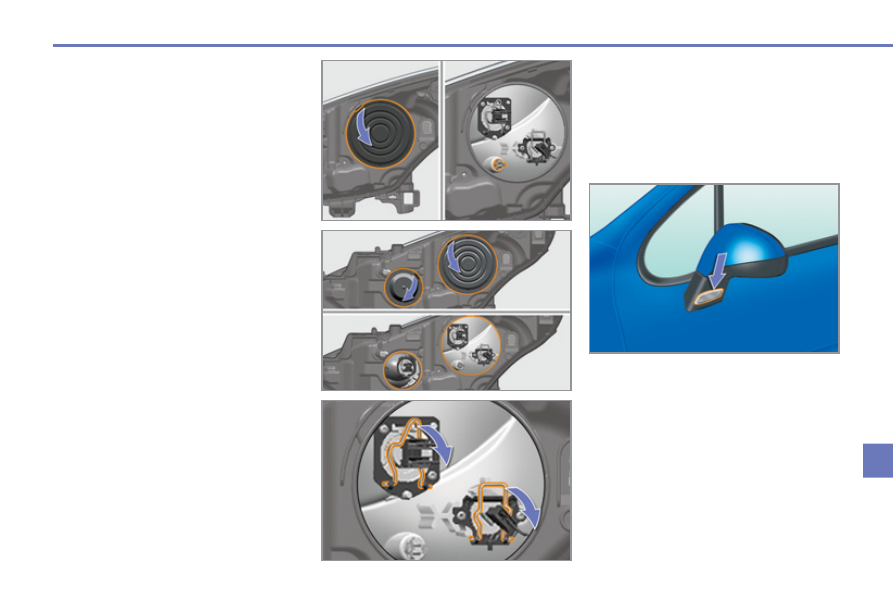Peugeot 207 (2011 year). Manual - part 10

9
PRACTICAL INFORMATION
143
Changing the sidelamp bulbs
) Disconnect the main headlamp con-
nector.
) Remove the plastic protective cover
by pulling on the tab.
) Turn the bulb holder one quarter of
a turn and remove it.
) Pull the bulb and change it.
To refi t, carry out these operations in re-
verse order.
Changing the dipped or main beam
headlamp bulbs
) Disconnect the main headlamp con-
nector.
) Remove the corresponding plastic
protective cover by pulling on the
tab.
) Disconnect the connector of the cor-
responding lamp.
) Move aside the spring to release the
bulb and remove the bulb.
To refi t, carry out these operations in re-
verse order.
Changing the foglamp bulbs
For replacement of these bulbs, contact a
PEUGEOT dealer or a qualifi ed workshop.
Changing the integrated direction
indicator side repeaters
) Insert a screwdriver towards the
centre of the repeater between the
repeater and the base of the mirror.
) Tilt the screwdriver to extract the re-
peater and remove the repeater.
) Disconnect the repeater connector.
To refi t, carry out these operations in re-
verse order.
To obtain a replacement repeater, contact
a PEUGEOT dealer or a qualifi ed work-
shop.